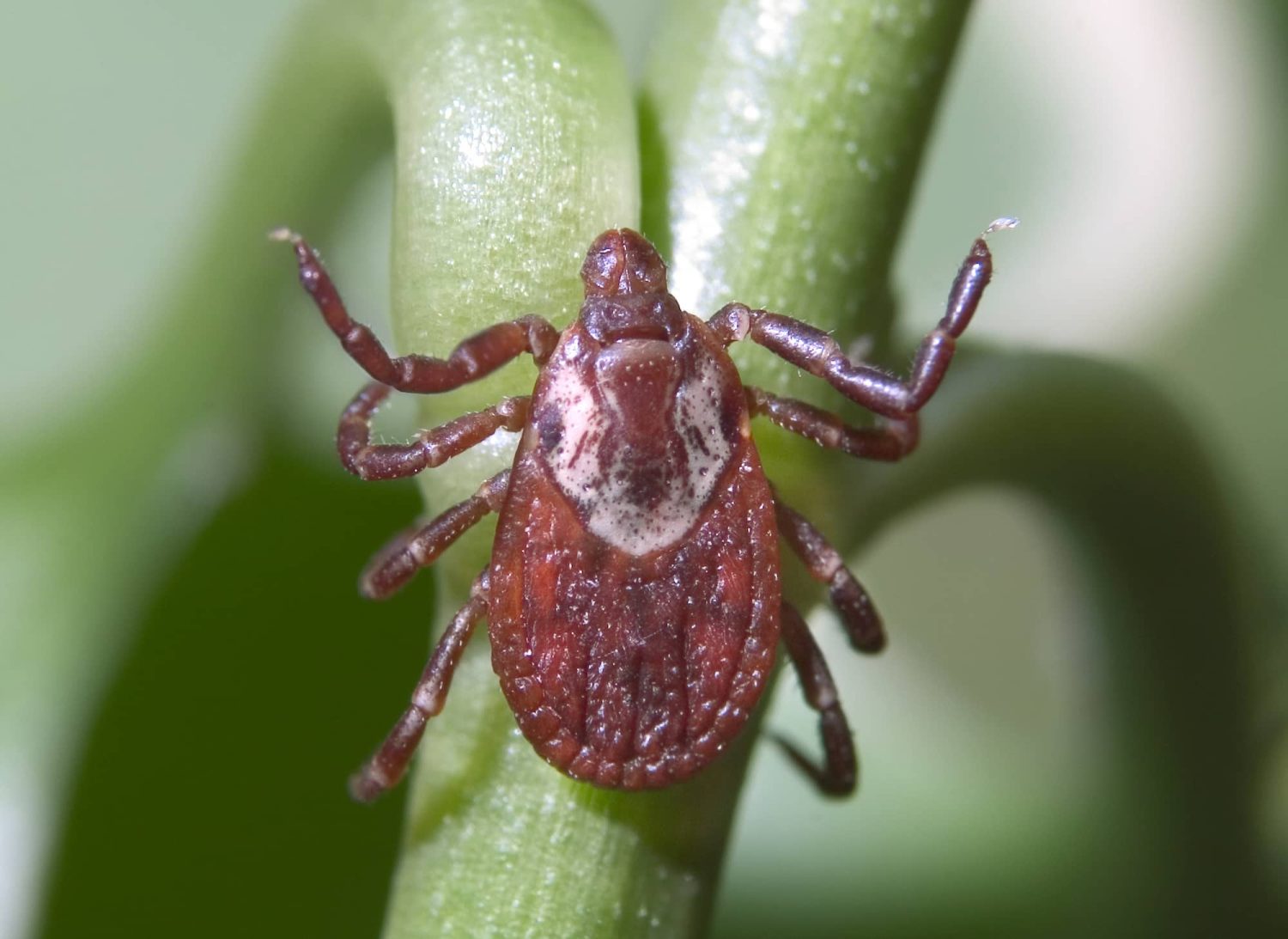
More Pest ID
- Acrobat Ants
- American Cockroach
- Argentine Ants
- Asian Roach
- Bed Bugs
- Big Headed Ant
- Black Legged Tick
- Black Widow Spider
- Brown Banded Roach
- Brown Dog Tick
- Brown Widow Spider
- Cellar Spider
- Crazy Ant
- Dry Wood Termites
- Elongated Twig Ant
- Fire Ants
- Florida Carpenter Ants
- Florida Woods Roach
- Formosan Termites
- German Roach
- Ghost Ants
- Jumping Spider
- Little Yellow Ant
- Lone Star Tick
- Oriental Roach
- Pavement Ants
- Pharaoh Ants
- Pyramid Ants
- Rover Ant
- Smokybrown Roach
- Subterranean Termites
- Thief Ant
- White-Footed Ant
- Wolf Spider
- Yellow Sac Spider
The American Dog Tick is spread across the continent, except in the Rocky Mountains. In America, you’ll find these ticks on dogs, coyotes, bears, and any other warm-bodied host that happens to cross its path. Once the tick moves toward the skin, it then crawls to warmer parts of the body like armpits and inner thighs. There, it bites into the flesh while using a numbing agent in its saliva that renders the puncture imperceptible. It can then suck the blood from its host unhindered until it is fully engorged and more than double its original size.
If you think you may have ticks in your home or yard, there are several things to do. But first, contact your local pest control company, like Drive-Bye Exterminators.
American Dog Tick Appearance
Most people have some idea of what a tick looks like. And if you are an outdoorsy type, you may have seen one up close. But knowing the difference between the ticks is a bit tricky. Here is a general overview of the appearance of the American Dog Tick.
Size: 5-15 mm in length
Bodies: soft, flat oval bodies with eight legs.
Coloration: brown with whitish to gray markings
The male ticks can live about three years and go through several stages: egg, larva, nymph, and adult. In order to progress through the four stages, the tick must have blood for each meal. Their food source is from mammals, birds, reptiles, and amphibians. They go from host to host with each stage of life.
Have you seen a tick that looks just like this? Hurry, and contact Drive-Bye Exterminators before you have a full-blown infestation.
The Dangers Associated with Ticks
Some ticks are known for carrying the bacterium that causes Lyme Disease in humans, such as the Black Legged or Deer Tick. The good news is that there is no Lyme Disease from the American Dog Tick.
However, it is not entirely harmless because the American Dog Tick can carry Tularemia and Rocky Mountain Spotted Fever. These two serious diseases can adversely affect humans. Both list a high fever as a symptom. Still, individuals may vary in a variety of other symptoms connected to these illnesses.
Bite wounds associated with Tularemia may form a skin ulcer (gaping wound). However, both diseases can be successfully treated with antibiotics when diagnosed early. Therefore, it is essential to contact a physician immediately if bitten. After contacting your doctor, contact the staff at Drive-Bye Exterminators.
How Tick Diseases Spread
The transmission of tick-borne illnesses is easy since they bite and drink blook. They are actually quite good at it. First, the tick will locate an excellent spot to feed on the host. Then it will grab on and insert the feeding tube. If unnoticed, the tick will then proceed to drink blood from the host for several days. This is where the disease passes to the tick.
Now, when the tick moves into the next stage of life, it will find a new host and transmit the disease to that one as well. The quicker humans get the tick off, the less chance they have of becoming sick from the tick. That is why it is so important to check for ticks after each hike.
Bite Symptoms
Should you get bitten by a tick, here are the immediate symptoms you may see:
- Itching
- Fever
- Tick paralysis
Watch out for a rash that appears near the tick bite. This is the primary symptom of Tularemia, and Rocky Mountain spotted fever.
Typically, the symptoms of a tick-borne disease will occur within a few days to a few weeks after a tick bite. Make sure you see your doctor immediately after receiving a tick bite, even if you don’t have symptoms.
Tick Prevention
These hitchhikers can be relentless, so preventing them from ever getting on you, your pet, or entering the home is the best idea. Here is what we suggest at Drive-Bye Exterminators.
- Remove ticks as soon as noticed on a person or pet.
- Apply insect and tick repellant to uncovered skin and clothing.
- When in grassy areas, especially tall grass, wetland, and shrubbery, wear clothing that covers the arms, legs, and feet (tuck pants inside socks or boots). Wear a hat.
- Wear light-colored clothing as this will make it easier to see ticks.
- If you are going to be in the garden or touching plants, wear garden gloves.
- Immediately after being outdoors, check clothing and remove it before entering the home. Place clothing in a plastic bag to go immediately into the wash.
- Shower immediately after spending time outdoors and check your skin and scalp.
- Be sure you are using a veterinary-approved tick control method for your pet.
- Call your veterinarian to check your pet that a tick has been entirely removed.
For more information on the deer or American Dog Tick, check this out at PestWorld.org.
American Dog Tick Elimination
When traipsing through the forest, you cannot eliminate the ticks from the forest you are in. Therefore, the only way to stop them is to take preventative measures. That said, if your pet brings them in and you get an infestation in the home, your house can be treated by a professional exterminator.
Drive-Bye Exterminators offers home and commercial pest control services in Pinellas County, Florida, and the surrounding areas. Family-owned and operated for over 25 years, Drive-Bye Exterminators has state-certified inspectors and exterminators. And we provide flea and tick extermination services to commercial and residential clients. Drive-Bye Exterminators offers each client the same level of attention, professionalism, and excellence.
Request a Pest Control or Termite Inspection today with the Professionals of Drive-Bye Exterminators. Contact Us Today







